Our New Year’s resolution? Stepping up our A-game to help our customers deliver stellar content experiences!
Therefore, we’ve released some notable new features and improvements based on customer feedback and have upgraded our platform to V4.1.
Check out what’s changed in the last couple of months:
Search Experience
Taruqa
Following conjoint tests with several customers, we have refined the relevance tuning of Taruqa, our proprietary search engine. We have also introduced new search templates that combine both global and personal ranking criteria.
Finding the right balance between all these criteria has required a lot of testing but the overall relevance of our search engine has clearly been improved.
If you’re not sure what Taruqa can mean for your portal, we have recently published a blog article with detailed information about our search engine and its business applications for technical and product content.
Search in the Reader Page
Our customers now have the possibility to add a search bar directly in the Reader page to search in all documents.
As Fluid Topics is highly configurable and metadata driven, users can define which metadata will be displayed as filters, and which ones are to be used to contextualize the search depending on the document being read.
Page Designer - Enhancement
We have been making regular improvements to the Page Designer, taking customer feedback into account, improving the Component template editors, and adding attributes to components.
To show you the multiple possibilities it can offer, we have created examples of designed pages to the Page Designer documentation. These templates can be directly uploaded to a portal to quickly design a brand-new homepage.
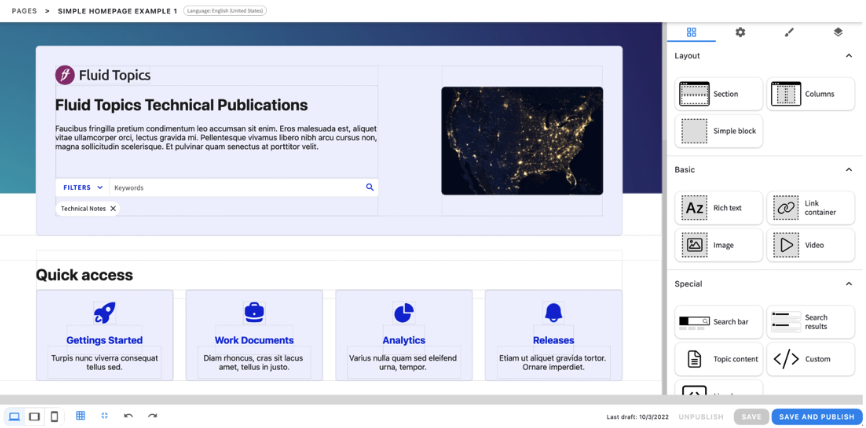
Additionally, we have introduced a Component Designer that enables you to create reusable components and choose which template should be applied and when.
The first type of component template available is the Search results component which can be used on the homepage or on custom pages.
New DITA Connector
The DITA connector is one of the oldest and most used connectors of the Fluid Topics platform. And it was time for a makeover.
We moved it to the new microservice-based connector architecture. This actually provides real advantages:
- The DITA-OT execution is more isolated to improve the security of the entire system,
- It can scale to more instances executing in parallel for faster processing,
- It’s compliant with our monitoring stack to spot any issues faster.
More importantly, it has given us a better foundation to add support to new features such as DITA chunks.
DITA chunk is used with two options: to-content or by-topic. We added support to chunk to-content for now. This option is used to merge topics together into a single piece of content. This can be useful for improving the reading experience as all the small pieces of content are merged into a more consistent topic.
When using the DITA attribute chunk to-content, the DITA connector will keep the sub-topics as section topics. These topics of a new kind can be grouped together in the Reader page using a new pagination option. A secondary Table of Contents will automatically appear with the hierarchy of sections.
Note: The new DITA connector is only available on Kubernetes environments such as our Cloud infrastructure.
OpenAPI Connector
Fluid Topics can now process OpenAPI v2, v3 or v3.1 documents, both in YAML or JSON format.
The connector automatically generates a default rendering of API specs, such as in the image below. Users can apply CSS styles to produce a result that matches their guidelines.
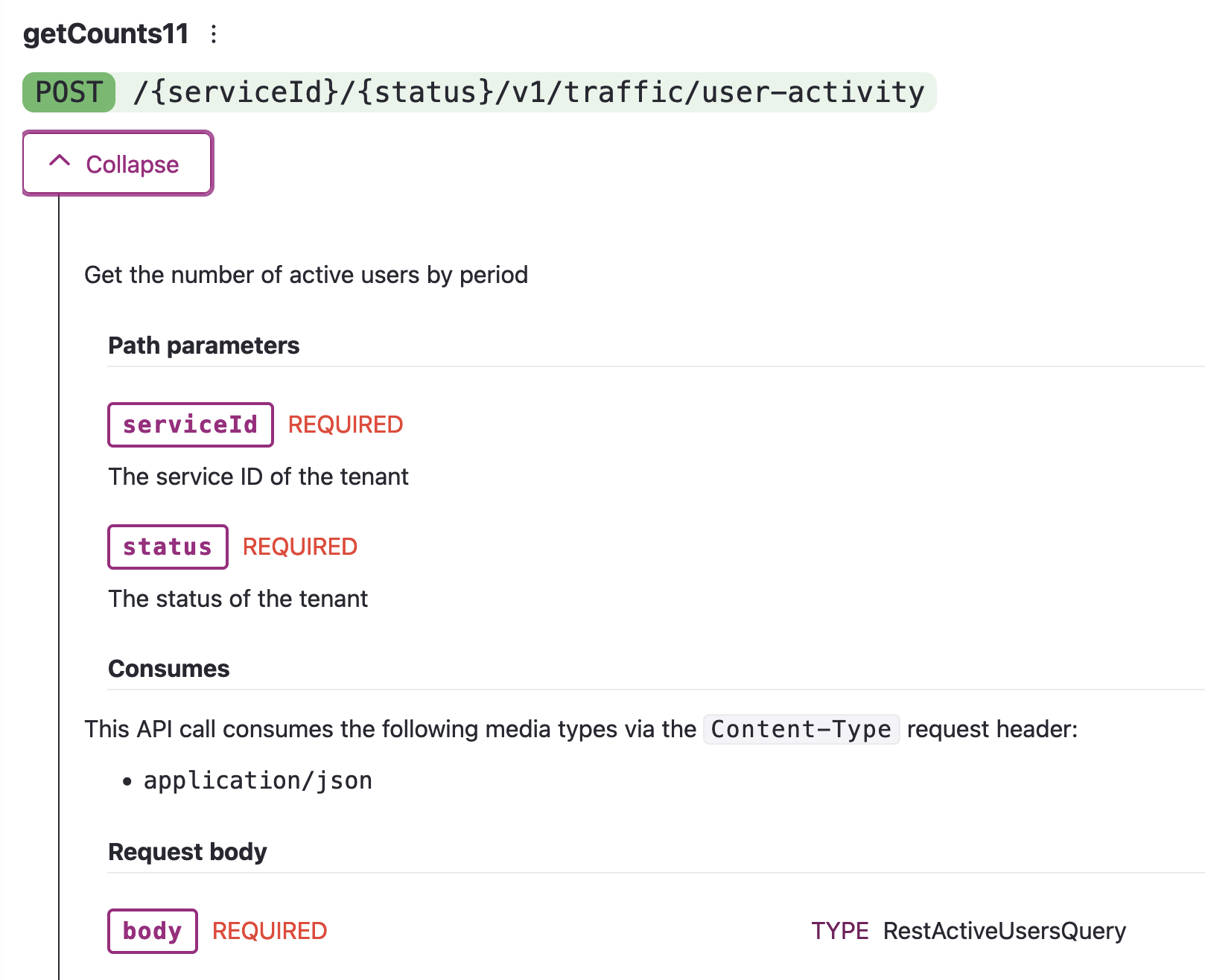
Paligo Connector Update
The Paligo connector already supported cross-book links using Paligo data-origin-id identifier (which translates into ft:baseId in Fluid Topics). In partnership with Paligo, we have added support for cross-book links using Paligo fork-id (which translates into ft:originId in Fluid Topics).
What is the difference? Both systems have two identifiers to identify a topic:
- A common identifier for the topic whatever its use,
- A dedicated identifier for the topic when used in a specific publication.
For example, if a topic is used in multiple variants of the same document (v1, v2, v3, …), it will have one common identifier and multiple specific identifiers (one for each variant).
When creating a link to a topic in another document, we wanted to offer users the ability to choose between these two identifiers:
- If the link targets a specific version, it should use the fork-id in Paligo.
- If the link does not know which version to target, then it should use the data-origin-id in Paligo. In that case, Fluid Topics shows a preview of the content with a selector of the desired variant.
SEO Improvement
We have introduced a new feature to let administrators configure robots meta tags depending on a publication’s metadata. It is now possible to choose a subset of documents to index. Older versions of the documentation will still be available on the Fluid Topics portal but not indexed by web search engines.
We have also addressed several alerts regarding Mobile Usability by optimizing the structure of the documentation we serve to bots.
Analytics
We have introduced three new reports to leverage our customers’ understanding of their portal usage over time:
Content inventory to accurately visualize how the number of documents, topics and map attachments evolve over time.
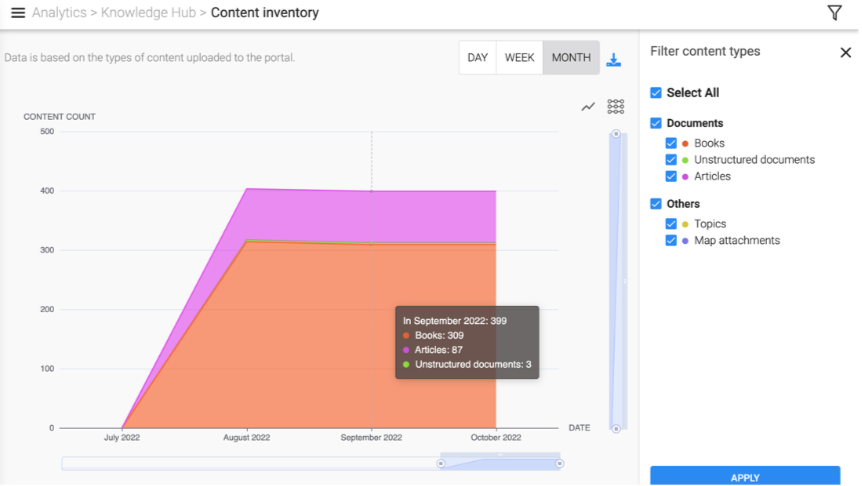
Event traffic to check how users engage with the content, displaying documents, topics, searching results, sending feedback, creating personal books…
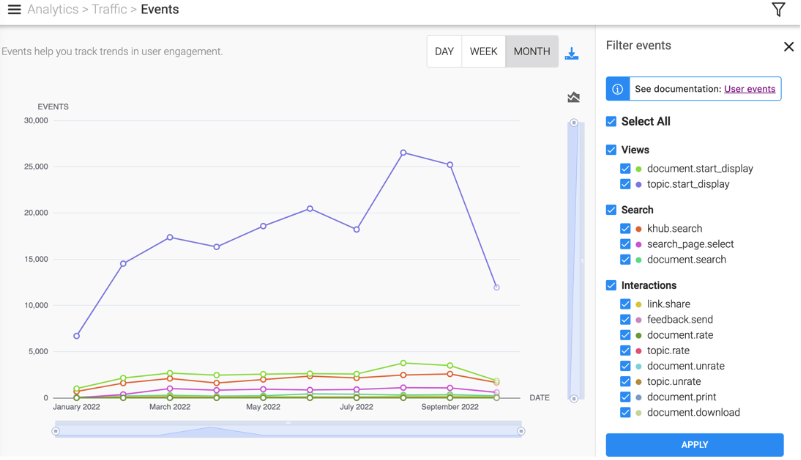
A new user centric dashboard to let our customers see the evolution of user assets over time: how many bookmarks, personal books and personal topics, saved searches, alerts, and collections are stored in the portal? How do users’ assets evolve?
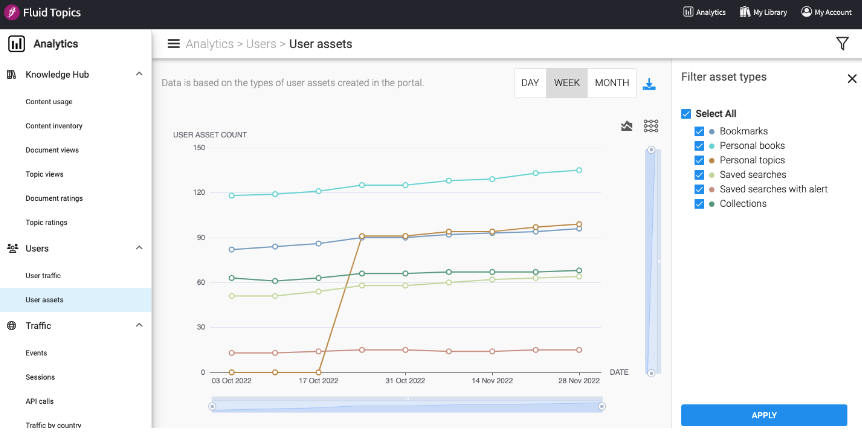
ISO 27001 Certification
 In November 2022 Antidot achieved the ISO 27001:2013 certification for information security management systems, demonstrating the company’s commitment to the highest level of internal compliance and security.
In November 2022 Antidot achieved the ISO 27001:2013 certification for information security management systems, demonstrating the company’s commitment to the highest level of internal compliance and security.
If you’d like to get all details, head on over here.
For more information, check the full release note
Please give this new version a spin
and let us know what you think.
If you want to know the roadmap and participate to the choices of the next features, feel free to contact us.
We develop Fluid Topics for you.
